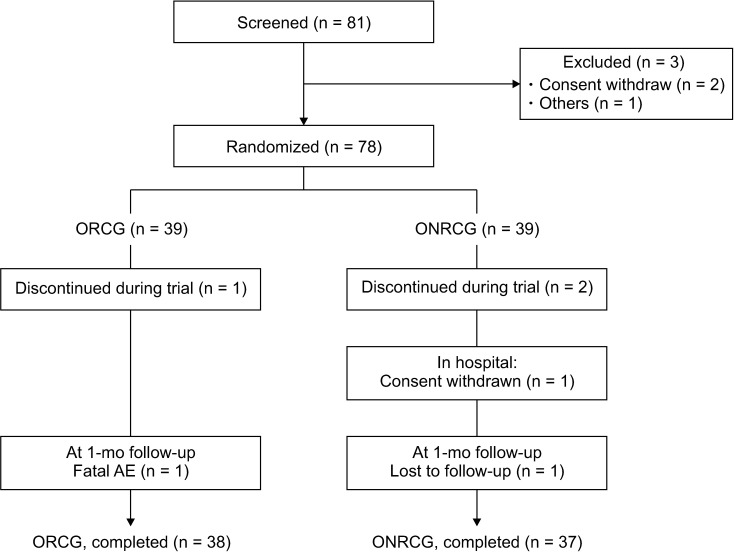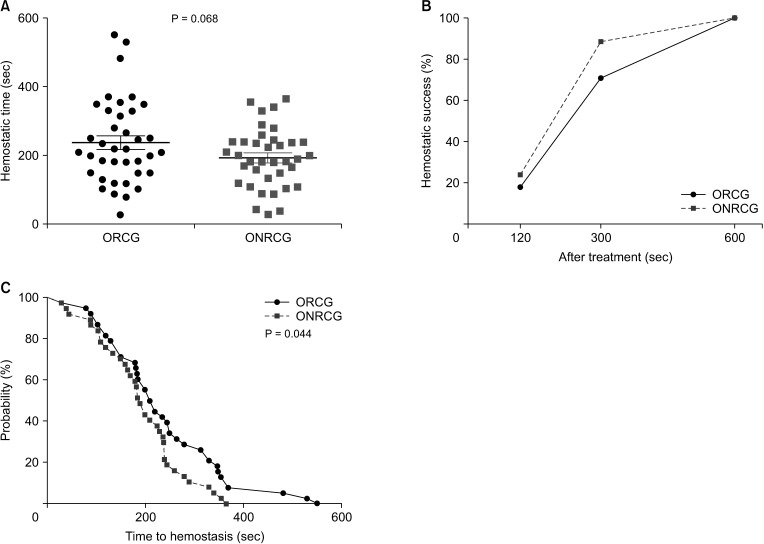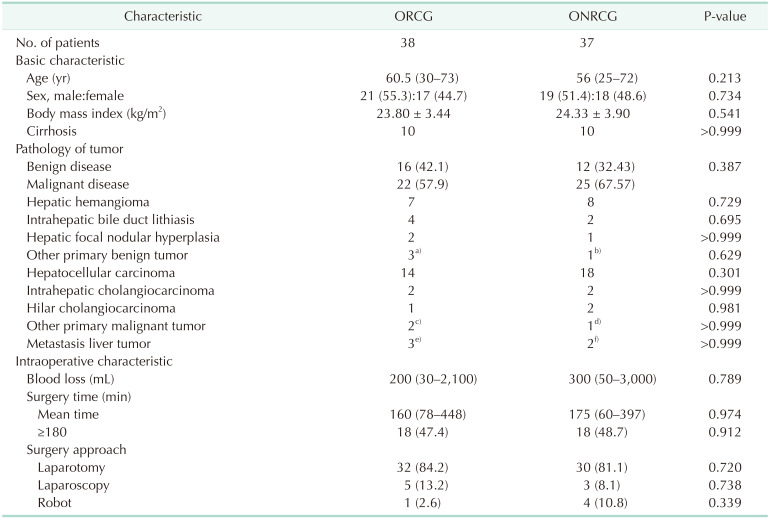1. Kubo S, Takemura S, Yamamoto S, Hai S, Ichikawa T, Kodai S, et al. Risk factors for massive blood loss during liver resection for hepatocellular carcinoma in patients with cirrhosis. Hepatogastroenterology. 2007; 54:830–833. PMID:
17591073.
2. Lei Z, Chang L, Fan-Di M, Qi-Fei W, Feng T, Ming-Hui T, et al. Exploration on surgical-related factors influencing HCC patients prognosis. Hepatogastroenterology. 2012; 59:1541–1543. PMID:
22172375.

3. Harada N, Shirabe K, Maeda T, Kayashima H, Ishida T, Maehara Y. Blood transfusion is associated with recurrence of hepatocellular carcinoma after hepatectomy in Child-Pugh class A patients. World J Surg. 2015; 39:1044–1051. PMID:
25446481.

4. Li Z, Sun YM, Wu FX, Yang LQ, Lu ZJ, Yu WF. Controlled low central venous pressure reduces blood loss and transfusion requirements in hepatectomy. World J Gastroenterol. 2014; 20:303–309. PMID:
24415886.

5. Lau WY, Lai EC, Lau SH. Methods of vascular control technique during liver resection: a comprehensive review. Hepatobiliary Pancreat Dis Int. 2010; 9:473–481. PMID:
20943455.
6. Lee N, Cho CW, Kim JM, Choi GS, Kwon CH, Joh JW. Application of temporary inf low control of the Gl issonean pedicle method provides a safe and easy technique for totally laparoscopic hemihepatectomy by Gl issonean approach. Ann Surg Treat Res. 2017; 92:383–386. PMID:
28480187.
7. Doklestic K, Karamarkovic A, Stefanovic B, Stefanovic B, Milic N, Gregoric P, et al. The efficacy of three transection techniques of the liver resection: a randomized clinical trial. Hepatogastroenterology. 2012; 59:1501–1506. PMID:
22115802.
8. Wolf RF, Xie H, Petty J, Teach JS, Prahl SA. Argon ion beam hemostasis with albumin after liver resection. Am J Surg. 2002; 183:584–587. PMID:
12034399.

9. Rau HG, Wichmann MW, Schinkel S, Buttler E, Pickelmann S, Schauer R, et al. Surgical techniques in hepatic resections: Ultrasonic aspirator versus Jet-Cutter. A prospective randomized clinical trial. Zentralbl Chir. 2001; 126:586–590. PMID:
11518996.
10. Arita J, Hasegawa K, Kokudo N, Sano K, Sugawara Y, Makuuchi M. Randomized clinical trial of the effect of a saline-linked radiofrequency coagulator on blood loss during hepatic resection. Br J Surg. 2005; 92:954–959. PMID:
16034832.

11. Spotnitz WD, Burks S. State-of-the-art review: hemostats, sealants, and adhesives II. Update as well as how and when to use the components of the surgical toolbox. Clin Appl Thromb Hemost. 2010; 16:497–514. PMID:
20699255.

12. Frantz VK, Lattes R. Oxidized celluloseabsorbable gauze (cellulosic acid). JAMA. 1945; 129:798–801.
13. Lewis KM, Spazierer D, Urban MD, Lin L, Redl H, Goppelt A. Comparison of regenerated and non-regenerated oxidized cellulose hemostatic agents. Eur Surg. 2013; 45:213–220. PMID:
23950762.

14. Dindo D, Demartines N, Clavien PA. Classification of surgical complications: a new proposal with evaluation in a cohort of 6,336 patients and results of a survey. Ann Surg. 2004; 240:205–213. PMID:
15273542.
15. Genyk Y, Kato T, Pomposelli JJ, Wright JK Jr, Sher LS, Tetens V, et al. Fibrin sealant patch (TachoSil) vs oxidized regenerated cellulose patch (Surgicel Original) for the secondary treatment of local bleeding in patients undergoing hepatic resection: a randomized controlled trial. J Am Coll Surg. 2016; 222:261–268. PMID:
26776356.
16. Cescon M, Vetrone G, Grazi GL, Ramacciato G, Ercolani G, Ravaioli M, et al. Trends in perioperative outcome after hepatic resection: analysis of 1,500 consecutive unselected cases over 20 years. Ann Surg. 2009; 249:995–1002. PMID:
19474679.
17. Wang Z, Liao BY, Qiu SJ, Sun HC, Yang XR, Zhou J, et al. Oxidized regenerated cel lulose reduces the amount of fluid drainage after liver resection: a randomized prospective clinical trial. Hepatogastroenterology. 2015; 62:951–954. PMID:
26902035.
18. Lewis PB, Wilson ST, Kentala DR, Barry J, Lewis KM. Computed tomographic characterization of Traumastem: a new oxidized cellulose hemostatic agent. Tomography. 2016; 2:175–178. PMID:
30042962.
19. Badenes D, Pijuan L, Curull V, Sánchez-Font A. A foreign body reaction to Surgicel® in a lymph node diagnosed by endobronchial ultrasound-guided transbronchial needle aspiration. Ann Thorac Med. 2017; 12:55–56. PMID:
28197224.

20. Habal P, Simek J, Stětina M. [Improving of treatment safety in emergency thoracic surgery]. Rozhl Chir. 2010; 89:261–264. Czech. PMID:
20586166.
21. Sefr R, Silák J, Ondrák M, Fiala L. [Use of local hemostyptic drugs in liver resections]. Rozhl Chir. 2009; 88:337–341. Czech. PMID:
19642329.
22. Haghpanah S, Zahedi Z, Parand S, Karimi M. An experience of using Traumastem P in control of spontaneous nose bleeding in patients with inherited bleeding disorders in southern Iran. Haemophilia. 2014; 20:e79–e80. PMID:
24165209.

23. Young ST, Paulson EK, McCann RL, Baker ME. Appearance of oxidized cellulose (Surgicel) on postoperative CT scans: similarity to postoperative abscess. AJR Am J Roentgenol. 1993; 160:275–277. PMID:
8424333.








 PDF
PDF Citation
Citation Print
Print




 XML Download
XML Download